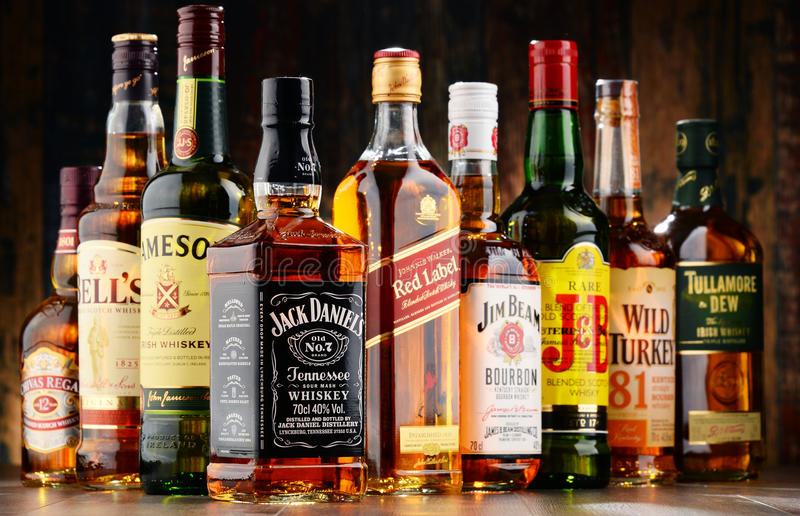Alcohols
Salam (May God Bless You). Alcohols are mostly known as beverages across the globe but in science they make a part of the homologous series. The alcohols have the functional group of -OH, this is called the hydroxyle group. The general formula of an alcohol is CnH2n+1OH. The number of carbon atoms depends upon the prefix used such meth which has 1 carbon atom in it. The suffix used will be “anol”. The alcohols also make up isomers such as propan1-ol and propan2-ol are isomers of each other because they have same molecular formula but they do not share the similarity in their physical properties.
The alcohols also burn readily in air and does not burn completely in the absence of air so produces carbon dioxide, water and carbon monoxide gas. Different alcohols can be mixed such as ethanol and methanol to form spirit bottles which provide a different source of providing flame.
Alcohols react with oxygen to form carboxylic acids. If placed in a good amount of air, the alcohol used will be oxidised to a carboxylic acid such ethanol to ethanoic acid. An oxidising agent can also be used for such process. The alcohols react with carboxylic acids to form esters.
To produce alcohols fermentation process is used which involves use of microorganisms among which is yeast. The yeast produces ethanol when allowed to grow in anerobic conditions and also produces carbon dioxide. The ethanol is a waste product which inhibits the growth of yeast once it increases in concentration and soon the yeast stops growing. The carbon dioxide helps in bread making process as it helps the dough rises in forms of bubbles. To obtain pure ethanol the ethanol is then distillated where the product should be about 96% ethanol.
Alcohol can also be produced by hydration of alkene. We could use an acidic catalyst to start the process; C2H4 (g) + H2O(g) → C2H5OH(l) ΔH = – 47kJ/mol.
Carboxylic Acids
Carboxylic acids are a part of the homologous series with a functional group of -CO2OH and the general formula of CnH2n+1CO2H. The carboxylic acids use the same prefixe s as the rest of the homologous series. The carboxylic acids use the suffix ‘anoic’ and along with the word ‘acid’. Carboxylic acids are generally weak acids becuase these have chains of carbon in them, when the chains go long and long they become more insoluble in water. Even the soluble acids are weak acids because the range of dissociation of the acids into ions is so small and the reactions a re
s as the rest of the homologous series. The carboxylic acids use the suffix ‘anoic’ and along with the word ‘acid’. Carboxylic acids are generally weak acids becuase these have chains of carbon in them, when the chains go long and long they become more insoluble in water. Even the soluble acids are weak acids because the range of dissociation of the acids into ions is so small and the reactions a re versible. Carboxylic acids react with alcohol to form esters. Esters are formed when these two homologous series combine and the new compound is named after the two. The name of the alcohol is used first and the name of the carboxylic acid is used after, for example ‘ethyl ethanoate’.
versible. Carboxylic acids react with alcohol to form esters. Esters are formed when these two homologous series combine and the new compound is named after the two. The name of the alcohol is used first and the name of the carboxylic acid is used after, for example ‘ethyl ethanoate’.
Polymerization
Polymers are molecules formed when monomers join together. Po lymers with two different monomers are called copolymers. The polymers have two ways of formation. One is the condensation method. In this method when monomers join together there is molecule which is released from the reaction which is commonly but not always water. The other method is the addition method, in which the alkenes break their carbon-carbon double bond to form longer chains of carbon. The products are named poly(name of the alkene). There are two types of polymers commonly used across the globe. The poly
lymers with two different monomers are called copolymers. The polymers have two ways of formation. One is the condensation method. In this method when monomers join together there is molecule which is released from the reaction which is commonly but not always water. The other method is the addition method, in which the alkenes break their carbon-carbon double bond to form longer chains of carbon. The products are named poly(name of the alkene). There are two types of polymers commonly used across the globe. The poly amide which is more comm
amide which is more comm only known as nylon. The nylon has long chains of carbon which make it hard and so it is combined with cotton to produce a better clothe. The second is the polyester which is also a famous fabric material used.
only known as nylon. The nylon has long chains of carbon which make it hard and so it is combined with cotton to produce a better clothe. The second is the polyester which is also a famous fabric material used.
